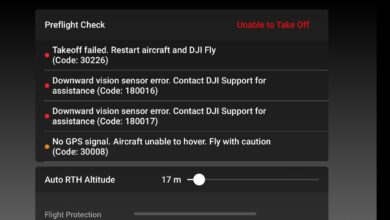DJI Air 3 vs DJI Air 2S: Unraveling the Drone Dilemma for Aerial Enthusiasts

In a surprising Christmas in July announcement, DJI unveiled the much-anticipated DJI Air 3, the latest iteration of the Air series, succeeding the DJI Air 2S released in April 2021. With a substantial price difference between the two models, drone enthusiasts are now faced with the crucial decision of choosing between the DJI Air 3 and the more budget-friendly Air 2S.
Price and Key Specs:
The DJI Air 3 has a higher price tag, starting at $1,099, while the Air 2S is more wallet-friendly at $799. A closer look at the specs reveals a 27% cost savings by opting for the previous-generation Air 2S. The question arises: Is the enhanced performance of the Air 3 worth the additional investment?
Camera Capabilities:
The standout feature of the DJI Air 3 is its dual-camera setup, comprising a 1/1.3-inch CMOS wide-angle camera and a 3x medium telecamera with optical zoom. This innovation brings the Air 3 closer to premium drones like the DJI Mavic 3 Pro, offering versatility without changing lenses. The Air 2S boasts a 1″ sensor camera with 20-megapixel photos and 5.4K video capabilities. The Air 3’s 48 MP photos and improved sensor design deliver superior image quality, particularly in low-light conditions.

New Shooting Modes:
While not a decisive factor, the DJI Air 3 introduces new shooting modes, including support for 2.7K vertical video shooting (9:16). This caters to content creators on platforms like Instagram Reels and TikTok, providing a more convenient filming experience for vertical formats.
Aircraft Performance:
The DJI Air 3 showcases a significant leap in aircraft performance over the Air 2S. With an impressive 48% increase in battery life, offering 46 minutes of flight time compared to the Air 2S’s 31 minutes, the Air 3 becomes an attractive choice for drone pilots prioritizing extended flight durations. However, the enhanced capabilities come at a cost—the Air 3 is larger and heavier and features omnidirectional obstacle sensing, surpassing the Air 2S in obstacle avoidance technology.
Video Transmission and Obstacle Sensing:
The Air 3 excels in video transmission with O4 technology, providing a maximum distance of 20 km, a notable improvement over the Air 2S’s O3 transmission with a 12 km range. Additionally, the Air 3 introduces APAS 5.0, enhancing obstacle sense and avoidance capabilities, making it the first in the Air Series to feature omnidirectional obstacle sensing.

Choosing Between the Two:
For drone pilots who value improved image quality in low-light environments, seek a zoom camera for still images, and prioritize long flight times, the DJI Air 3 is a compelling choice. On the other hand, the DJI Air 2S remains an excellent option for those who prioritize portability and are conscious of their budget. Existing Air 2S owners may find little incentive to upgrade, considering the formidable capabilities of their current drone.
The decision between the DJI Air 3 and DJI Air 2S ultimately hinges on individual preferences, budget constraints, and specific use cases. While the Air 3 brings noteworthy enhancements, the Air 2S remains a commendable choice for those looking to balance performance and affordability in consumer drones.
Follow Dronephi on Twitter, Facebook, Instagram, and LinkedIn, or join the Telegram channel for all the latest updates on FPV, Drone Tech, Military Drones, Drone Related News, and more!




